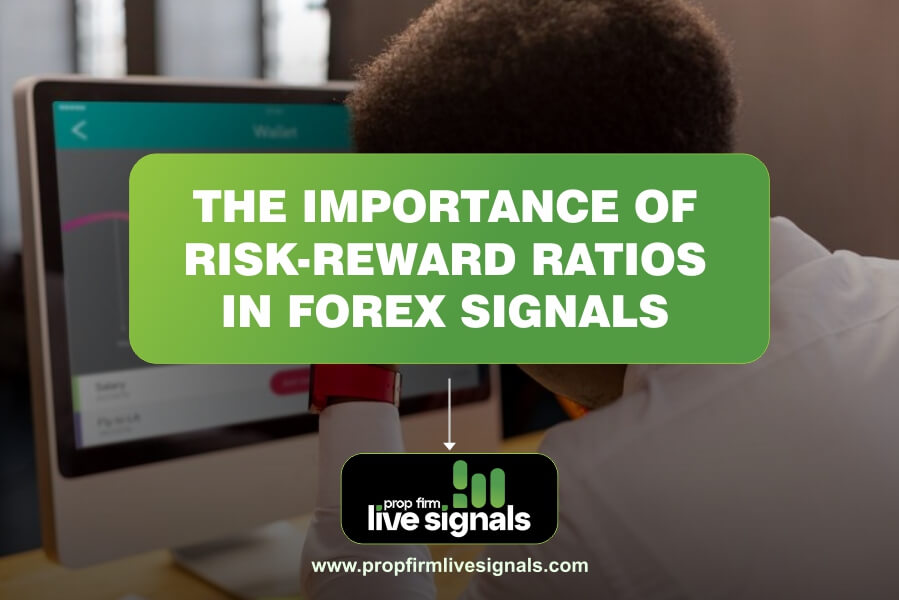This article discusses the importance of the risk-reward ratio, how to calculate it, and how to effectively use it when following forex signals.
Understanding Risk-Reward Ratios
The risk-to-reward ratio helps traders assess potential profit against loss, quantifying the relationship between expected ROI and risk.
To larger investors, a lesser risk-to-reward ratio is generally considered favorable because it reflects lower risk on investment with the same potential for gain. Most traders use this metric in planning the risk-to-reward viable for them to take into a trade. This ratio is calculated by dividing the potential loss if the price moves against a trader’s expectation by the expected profit if the trade moves in their favor.
How To Calculation Risk-Reward Ratios
It is calculated by comparing the potential profit (reward) of a trade to the potential loss (risk) of the same trade. The formula for the risk-reward ratio is: Risk Reward Ratio = (Take Profit – Entry Price) / (Entry Price – Stop Loss). The risk-reward ratio can be expressed as a ratio, a percentage, or a decimal. A ratio greater than 1:1 indicates a favorable reward-to-risk potential, while a ratio less than 1:1 suggests the risk outweighs the reward, making the trade less worthwhile.
Optimization Techniques of the Risk-to-Reward Ratio
Setting Realistic Targets of Profit
One needs to find out key support and resistance levels, also considering the trends and market indicators which may signal where realistic profit targets may lie. In order to establish appropriate take-profit levels, one needs to study the historical price data with respect to the possible magnitude of market moves.
Set Stop-Loss Orders
Identify what amount a trader is willing to lose on a single trade based on personal risk tolerance and current market conditions. Make use of some technical analysis tooling that would supply the necessary levels of support and resistance where stop-loss orders shall be set.
Trailing Stop-Loss Orders
Put trailing stop-loss orders to lock in profits when a trade moves in the right direction. Move your stop-loss level with the market price after the latter moves in the right direction, thus locking in your profit and giving room for more profits to accrue.
Scaling Out Positions
Partial closing of trades allows traders to close parts of the profitable trade incrementally. Partially close a portion and still leave a portion open to capture the upside. Scaling out is one strategy to lock in profits while reducing exposure to a reversal or market fluctuation.
Benefits of Using Risk-Reward Ratios In Forex Signals
Using risk-reward ratios in forex trading, especially with forex signals, helps traders optimize profitability and improve risk management decisions. Here are the key benefits:
Improved Risk Management
Risk-reward ratios ensure traders can measure the potential losses and gains of every trade in an orderly manner. A forex signal trader is thereby easily able to set clear stop-loss and take-profit levels in order to reduce emotional trading decisions and avoid major losses.
Informed Decision-Making
A well-calculated risk-reward ratio helps traders assess whether the trade signaled by a forex provider is worth taking. If the ratio is good, then the traders can confidently take the trade with the belief that the potential reward justifies the risk involved.
Consistency in Profits
With forex signals offering high risk-reward ratios-say, 2:1 or better-traders needn’t win on every trade. Even at a win rate of 50%, in the case of their winning trades coming in twice as large as losses, they will turn in consistent profits.
Encourages Discipline
They will mostly stay with the trades that are presenting them with an acceptable risk-reward ratio. This makes them follow a disciplined approach toward trade, which can prevent them from entering high-risk trades on emotional or greedy grounds. It is very important to keep their feelings under control and lower losses.
Reduces Psychological Pressure
By having clear risk-reward ratios, traders can make appropriate expectations for every trade. This reduces the emotional pressure to win every trade, helping the trader regain profitability and lessen stress during market volatility.
Integrating Risk-Reward Ratios into Forex Signals
Risk-reward ratios are essential for traders to assess profit potential against trade risks. Forex signals aid risk management and optimal trade decisions by providing stop-loss and take-profit levels to assess trade viability. A sensible minimum, say 2:1, would ensure that the potential reward justifies the risk. These suggestions would scale position sizes and filter trades by a minimum risk-reward ratio to enhance long-term profitability and discipline. In this way, it encourages consistent profitability and better risk management when following forex signals.
Frequently Asked Questions (FAQs)
What is a risk-reward ratio in forex trading?
- The risk/reward ratio helps investors manage their risk of losing money on trades. Even if a trader has some profitable trades, they will lose money over time if their win rate is below 50%. The risk/reward ratio measures the difference between a trade entry point to a stop loss and a sell or take-profit order. Comparing these two provides the ratio of profit to loss, or reward to risk.
Why is the risk/return ratio important?
- It helps investors decide whether to invest in a security by comparing potential returns to risks; a lower ratio indicates greater rewards relative to risk, while a higher ratio suggests the opposite. Understanding the risk/return ratio empowers investors to make better-informed decisions while effectively managing the associated risks.
What Does the Risk/Reward Ratio Tell You?
- The risk/reward ratio helps investors manage their exposure to the risk of losing money on trades. A trader can still lose money over time with several profitable trades if their win rate is below 50%. The risk/reward ratio measures the difference between the trade entry point and the stop-loss or take-profit order.




